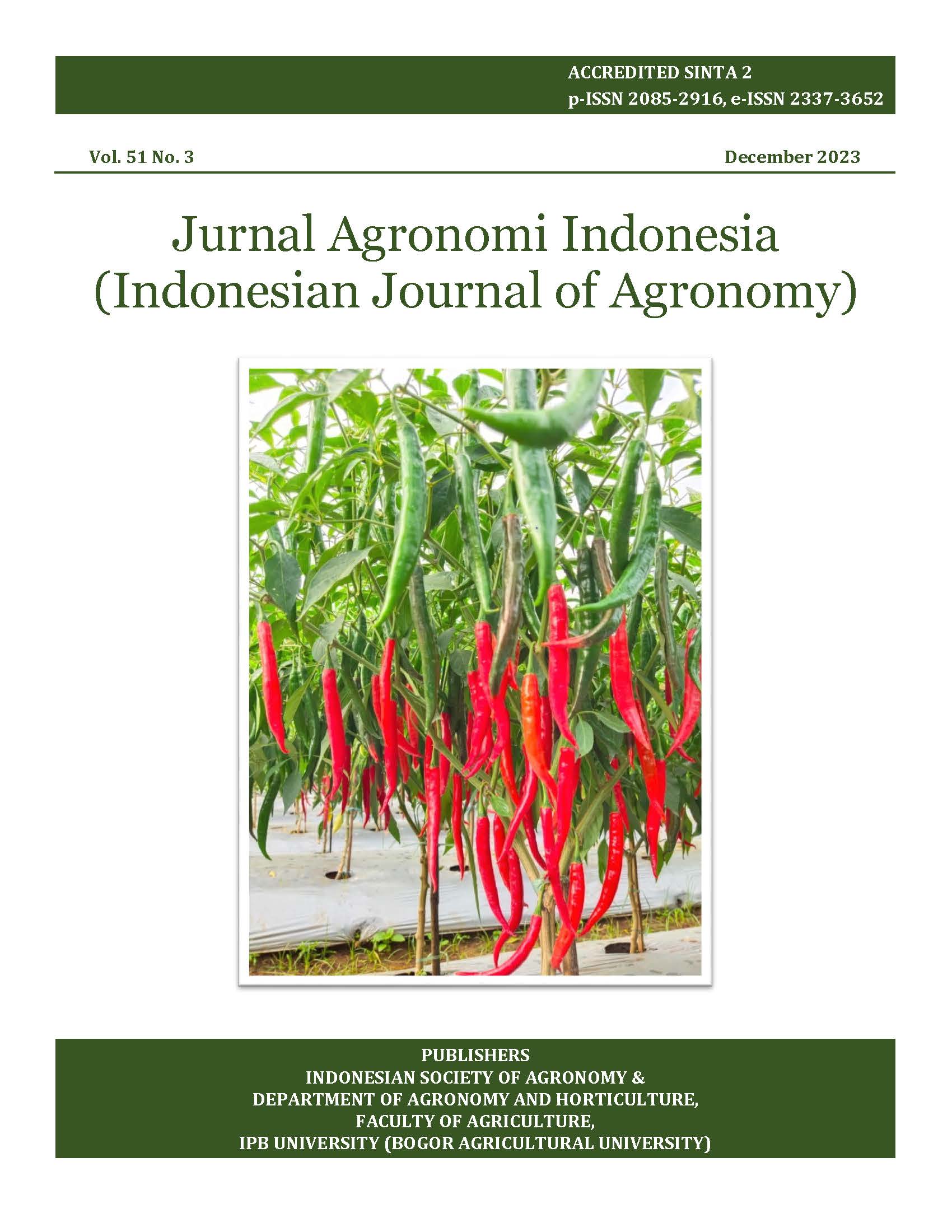Genetic diversity among Vanda celebica, Vanda dearei, and their hybrids based on ISSR markers
Abstract
A cross between two different orchid species is a way to improve the horticultural performance of the hybrids. Inter-simple sequence repeat (ISSR) is a method of molecular markers that could be used to analyze genetic diversity among parents and their hybrid progenies. The purpose of this study was to examine the genetic diversity of the parent species of Vanda dearei and Vanda celebica, the hybrid progenies of (♀ Vanda dearei x ♂ Vanda celebica)-cross and the hybrid progenies of their reciprocal cross. DNA amplification using 5 ISSR primers, namely UBC 810, UBC 815, UBC 834, UBC 835, and UBC 880, produced 60 DNA bands with a size of 200-2800 bp, with the percentage of polymorphism ranging from 81.8%-100% and the percentage of monomorphism as much as 0%-18.2%. Analysis of genetic diversity showed that the genetic diversity among hybrid progenies of (♀ V. dearei x ♂ V. celebica) was 8%. In comparison, those among hybrid progenies of its reciprocal cross (♀ V. celebica x ♂ V. dearei) were 13%. In conclusion, deploying V. celebica as a female parent and V. dearei as a male parent will most likely produce higher diversity among its progenies, compared to the reciprocal cross.
Keywords: DNA bands; diversity; marker, orchid; reciprocal cross













